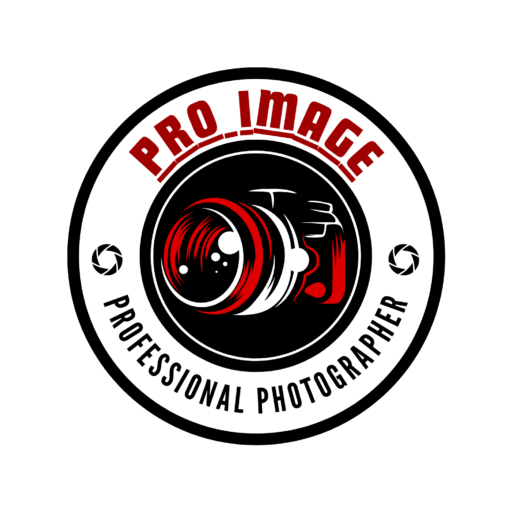Understanding the Importance of Quality Imagery
In today’s visually driven world, the significance of high-quality imagery cannot be overstated. Whether in professional settings or personal projects, quality visuals play an essential role in effective communication. High-resolution images capture attention and evoke emotions, thereby creating a lasting impression on viewers. This is particularly important in fields such as marketing, where the goal is to engage potential customers through aesthetically appealing content.
Effective imagery can serve as a tool to convey complex messages quickly and efficiently. Visuals often communicate ideas faster than written words can articulate, making them invaluable in presentations and social media posts. Quality images help to illustrate concepts clearly, enabling audiences to grasp information with ease. Furthermore, research indicates that content accompanied by high-quality visuals is more likely to be shared, increasing visibility and engagement.
In addition to enhancing communication, visuals contribute significantly to overall brand identity. Businesses that consistently use high-quality images are more likely to establish a cohesive visual brand language that resonates with their audience. This contributes to brand recognition and trust, elements critical for long-term success in any industry. Conversely, using poor-quality or unlicensed images can damage a brand’s credibility, leading to negative perceptions among potential customers.
Additionally, the legality of the images used is paramount. Professionals engaged in blogging, marketing, and social media must ensure that the images they choose comply with copyright laws, which can be a complex issue. Incorporating legal, high-resolution images helps in avoiding potential legal repercussions while also providing audiences with appealing content that enhances the overall user experience. Quality imagery, therefore, is not only about aesthetics but also about legality and brand integrity, making it an indispensable asset in today’s media landscape.
Top Sources for Free High-Quality Photos
When seeking free stock photos, various platforms cater to diverse needs, from personal projects to professional applications. Here are some notable sources that provide high-quality images, categorized by usage rights and content types, ensuring users can effectively find what they require.
One of the most popular resources is Unsplash. This platform boasts a vast collection of stunning, high-resolution images contributed by talented photographers. Unsplash offers a broad range of categories, including landscapes, urban scenes, and portraits. The site’s straightforward search functionality allows users to discover images effortlessly, making it a go-to choice for many. Furthermore, Unsplash images are free for personal and commercial use, with no attribution required, promoting accessibility.
Pexels is another exceptional source for free, high-quality photos. The platform functions similarly to Unsplash, featuring a diverse array of genres and styles. Pexels also provides free video clips, making it a versatile resource for creators. Users can filter their searches based on orientation, color, and more, enabling easy access to specific visuals. All images on Pexels are licensed under the Creative Commons Zero (CC0) license, meaning they can be freely used for any purpose, further encouraging creativity.
Lastly, Pixabay presents a library of over a million free images, illustrations, and vector graphics. This platform stands out due to its extensive offerings in various artistic styles, such as abstract, nature, and people. Like Pexels and Unsplash, Pixabay materials are free, with a simple licensing structure that permits use without attribution. To optimize your search experience on these platforms, consider using specific keywords and filters related to the intended content type, enabling more targeted results.
How to Properly Attribute Free Images
Attributing free images properly is essential for maintaining ethical standards and respecting the rights of photographers and creators. When utilizing images from free sources, it is crucial to understand the different licensing models that dictate how they can be used and credited. Creative Commons licenses, for example, come in various forms, specifying requirements for attribution, non-commercial use, and modifications. When crediting a photographer, it is vital to adhere to these guidelines to avoid potential legal issues and to honor the hard work of the original creators.
To properly attribute free images, you generally need to include the following details: the name of the photographer or creator, the title of the image, the source where the image was found, and the license type. For instance, if an image is sourced from a website that offers photographs under a Creative Commons license, it is imperative to include both the creator’s name and the specific license linked to the image, ensuring that the attribution conforms to the stated requirements.
However, common misconceptions about attribution often arise. Some individuals mistakenly believe that images labeled as “free” do not require any attribution. This assumption can lead to complications, particularly when the free images are under licenses that necessitate crediting the creator. Others may think that attribution can be arbitrary or minimal, which is not the case. Each image has its specific expectations regarding credit, and adhering to these specifications is not just a legal obligation but also a professional courtesy.
In summary, understanding how to properly attribute free images involves recognizing the importance of licensing and honoring the creators’ rights. By providing appropriate credit and adhering to the guidelines of usage, users can leverage free images ethically and effectively in their work.
Tips for Choosing the Right Images for Your Projects
When selecting images for any project, be it a website, social media, or presentations, it is crucial to choose visuals that resonate with your target audience. Understanding who will be viewing your content can dictate the types of images that will be most effective. Consider demographics such as age, gender, and cultural background, as these factors play a significant role in how visuals are perceived. Images should evoke the intended emotions and align with the audience’s values and interests.
Another key consideration is the tone of your content. The images you select should complement the overall message you wish to convey. For instance, a corporate presentation may benefit from professional, serious imagery, while a lifestyle blog might call for more vibrant and relaxed visuals. Ensuring a coherent tone will help maintain the engagement of your audience, reinforcing the messages you aim to deliver.
Relevance is an essential criterion when choosing images. Select visuals that directly relate to your content, enhancing the overall narrative. Images that are off-topic can confuse the audience and dilute the impact of your message. Incorporating contextually appropriate imagery creates an instant connection with the audience and makes the content more relatable.
Consistency in style across various visual assets is another vital tip for professionals. Different styles can create a disjointed experience for viewers, undermining the professionalism of your work. Whether it is a cohesive color palette, similar composition techniques, or a unified theme, maintaining consistency will help reinforce your brand identity. This applies to all visual materials, from website graphics to social media posts.
In conclusion, careful consideration of the audience, tone, relevance, and consistency will significantly enhance the effectiveness of imagery in your projects, ensuring that the visuals you choose are aligned with your goals and objectives.

